Aleenah Ansari
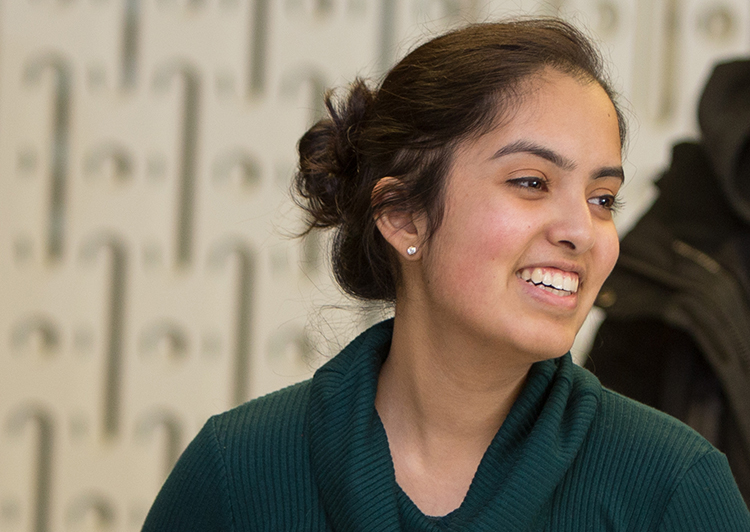
Aishwarya Mandyam, a current sophomore at the University of Washington (UW) studying at the Paul G. Allen School of Computer Science & Engineering (CSE), has explored outlets to translate concepts from computer science academia to industry through past internships at Expedia and Microsoft. In her internship roles, Mandyam worked on projects that allowed her to solve real-world problems and apply her knowledge of algorithms and program design from CSE coursework. Although Mandyam found this work interested, she wants her future projects to have a larger impact in improving people’s lives.
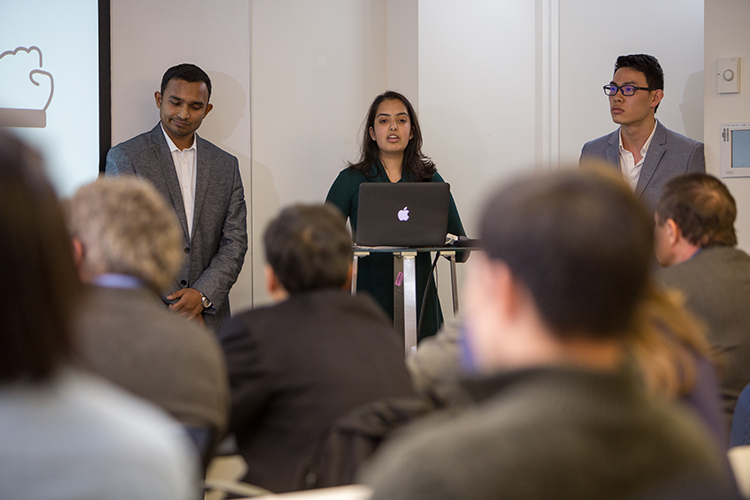
After taking a neural engineering course taught by Dr. Lise Johnson, the Center for Neurotechnology (CNT’s) university education manager, Mandyam became interested in the way that researchers in neural engineering create innovative products that address a specific need while also considering the ethics and long-term impact of their work. She realized that neural engineering could be an outlet for her to use her passion for technology and engineering to improve people’s quality of life.
“The potential [commercial] application of a neural engineering product is what would keep me going, and that’s not something I got from working at a large corporation,” Mandyam said.
To allow students like Mandyam to apply engineering principles from their coursework to independent projects, and explore the potential translation of these projects to industry, the CNT facilitates a yearly course at the UW, titled Neural Engineering Tech Studio, which is offered under BIOEN 461/561.

The concept for this class was first introduced in 2013 as a CNT competition known as the Tech Sandbox, but it later evolved into a 10-week neural engineering design class that counts toward the minor in Neural Computation and Engineering at the UW. This iteration of the course was offered during winter 2016, and it was open to graduate and undergraduate students at the UW in disciplines ranging from bioengineering to computer science.

In the course, students were sorted into teams and tasked with creating a product that addressed a current neural engineering problem. During this process, students also learned about how to engage with industry, identify a target population while anticipating ethical considerations, and sell their idea to a panel of judges.
“It’s a really good opportunity to be creative and pursue something you wouldn’t get to work on otherwise,” said Dr. Johnson, the course instructor. “If you’re doing research in a lab, you’re going to be working on whatever the lab is already doing. This is something that is almost completely unconstrained.”
Offering supplies, resources, and mentorship to foster creativity
Brian Mogen, the current co-founder and chief executive officer at Multimodal Health who is also pursuing a Ph.D. in the UW Department of Bioengineering, noted that traditional engineering classes provide advice about when to use certain code or algorithms in the context of the course but they don’t focus on independent problem solving. Contrastingly, the neural tech studio course allows students to focus on creating a working product that can be presented to a panel of judges by the end of the class.

“You’re asked to come up with an engaging presentation and a way of telling your story that is meaningful and valuable and conveys the value you think you have,” Mogen said.
Mandyam appreciated that the class allowed her to work with engineers across disciplines and leverage everyone’s strengths to create a quality final product.
“[In this course,] I’ve worked with more business and biology students than any other discipline of engineering. It was interesting to see how the other [team members] think about things and apply their skills,” Mandyam said. “It definitely makes me want to work with more engineers of other disciplines.”
This class offered resources and mentorship aimed at building on creative ideas that students already have – they might just lack the necessary technology, mentorship or funding to pursue an independent engineering project outside of their regular coursework. The CNT bridged this gap by providing high quality equipment, budget money, access to the Center’s workspace with 3-D printers and equipment for neural recording, and opportunities to interact with industry representatives.
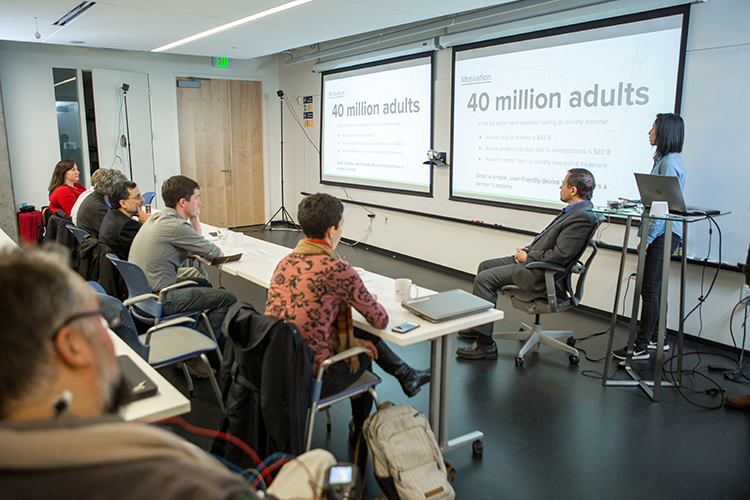
“The resources give you the perception that your resources are unlimited, which is really exciting when you want to engineer something,” Mandyam said. “[A lack of resources] prohibits a lot of people from [pursuing projects]. The fact that we have the CNT and so many resourceful people that can make our goals happen is really helpful.”
Additionally, the CNT supports the further development of these projects beyond the scope of the class. Mogen was part of a UW student team that won the Tech Sandbox competition in 2014 for a project called vHAB, an acronym that stands for “virtual rehabilitation.” Mogen’s team used virtual reality video games to make rehabilitation more engaging for patients recovering from stroke or other traumatic brain injuries.
“We were in the [CNT] office space for over a year, met with investors, and brought in research subjects to do clinical trials,” Mogen said. “The CNT supported us in navigating the transition from being a university research project to a corporate entity.”
Translating engineering skills from a classroom to an independent project
In the course, students were encouraged to choose project topics related to neural engineering, but their ideas did not have to be limited to the CNT’s areas of research. This year, many projects involved reading neural signals using electromyography (EMG) and heart rate monitoring, but for different problems across target populations.
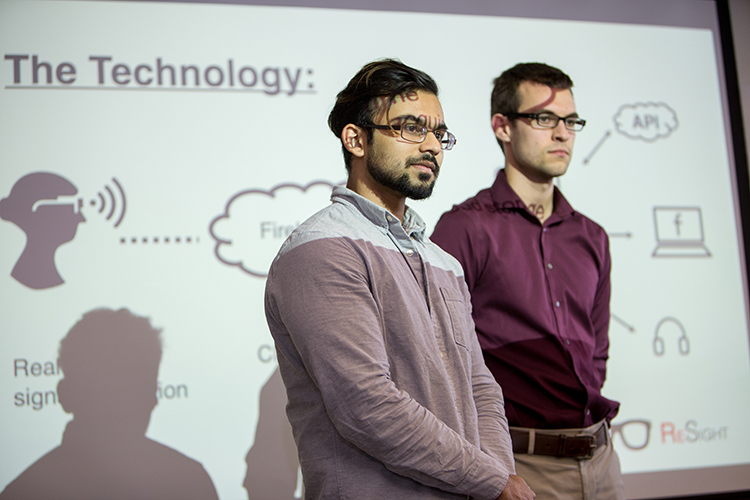
“I was especially impressed by the diversity of ideas,” Dr. Johnson said. “I think students are already creative and innovative if [we] give them the permission to be creative.”
One team created a product called Chill: Anxiety Monitor, which was a wearable device that could be calibrated based on the user’s own biology by measuring skin conductance, and EMG technology provided this data to generate a baseline “chill score.” Team members Bryan Womack, Mahdi Ramadan and Samantha Sun said that the product could be used for real-time monitoring of anxiety levels. When explaining the market potential of the project, the group members noted that over 40 million people in the U.S. have been diagnosed an anxiety disorder. Currently, there is no widespread technology for objectively monitoring anxiety levels and gauging the effectiveness of treatment.
Contrastingly, another team focused their project on the entertainment industry. Their product, called Panic Lens, used virtual reality and EMG technology to create an immersive gaming experience that allowed users to face their fears and compete to see who was the most courageous.
Although students had a lot of freedom over their project idea and how they used their time, Dr. Johnson incorporated structured mentorship and other sources of support throughout the course. Guest speakers or lectures during class time often focused on related information or skills such as pitching and presenting, or methods for quantitative analysis of neural-based data.
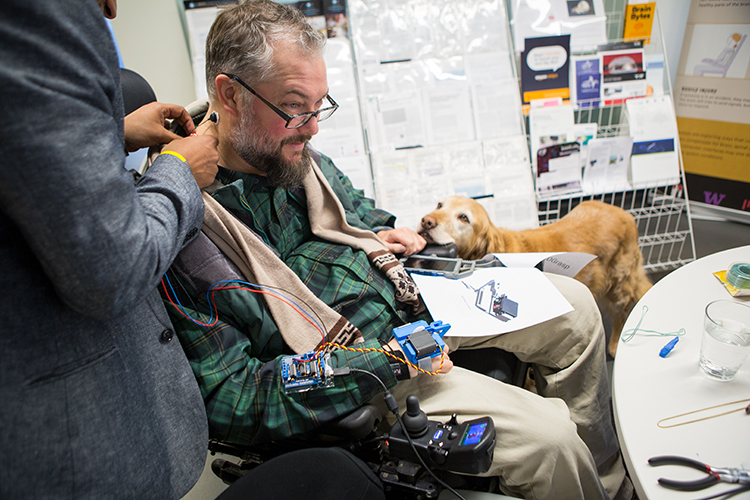
“Seeing people like the founders of MultiModal Health and [Dr. Johnson] and all the people who have spoken about their pathways into neural engineering has given me more definition about this field, and how I can make it that my own,” Mandyam said. “What do I know, how can I contribute my skills to this and how can I keep learning? That’s been really influential.”
Each team included a graduate student as well as an industry mentor who provided support about how to approach an engineering design project and make it viable beyond academia. All of the industry mentors were previous students involved at the CNT; for example, Mogen mentored a team that explored the clinical application of their product, and he leveraged his awareness of the current health care industry and past experience in the Tech Sandbox competition.
“We’ve been able to share [the] experience we’ve had, the current industry standards and how you solve problems in health care right now,” Mogen said. “You don’t need to reinvent the wheel. We’re there to help connect the dots of all the pieces that are out there.”
Additionally, the mentors also provided support related to technical and implementation skills as well as suggestions about how to plan for core milestones and considering engineering risk management, which involved identifying what factors to prioritize when creating a prototype. Mandyam noted that working on this project helped her learn how to be adaptive, especially when dealing with constraints like limited time.
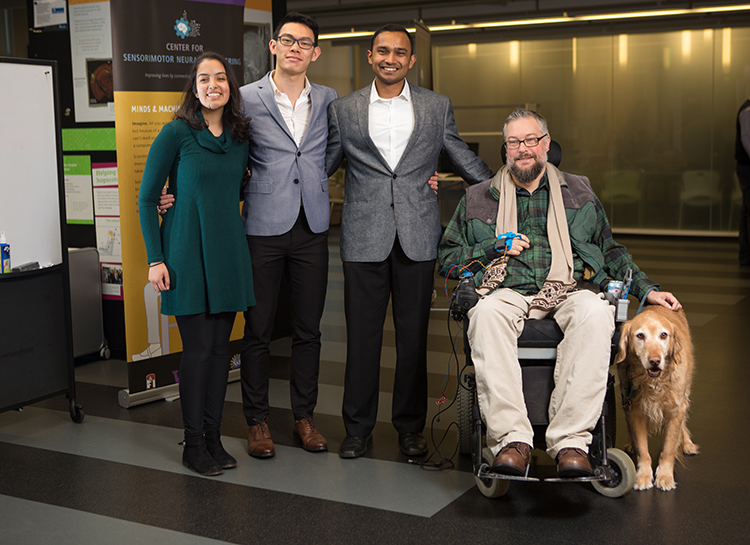
“Considering all the [constraints, it] is really helpful in giving more clarity to what this would look like in the real world. For example, risk management: What happens [when] your 3-D printer didn’t work? What happens when your EMG sensor is broken? What happens when it takes extra time to order parts?” Mandyam said. “Those things don’t come up in classes, but here, it’s something you learn to work around.”
To support students throughout this translational engineering project, Dr. Johnson and Kristen Bergsman, engineering education research manager at the CNT, created a CNT design notebook as a resource. The notebook provides a variety of teambuilding exercises, brainstorming questions and opportunities to reflect on how the team adapted in response to challenges. For example, students were asked to complete a team skills analysis during their first week.
“The idea behind [the notebook] is to really scaffold the engineering design process and be a tool for students to try and get them through the process of creating a demo to present at the end [of the course],” Dr. Johnson said.
Dr. Johnson hopes that this notebook will be used at other engineering research centers as an assessment tool for students and instructors in engineering design.
Engaging with industry and projecting forward
On March 8, students presented their pitch, as a well as a demonstration of a prototype of their engineered product, to a panel of CNT industry affiliates and members of the community. When Mogen prepared for the presentation as a Tech Sandbox participant, he focused on highlighting the purpose behind each engineering design decision, and the next steps for his prototype in a future version or iteration.
“You have to convince a panel that your idea is not only a good piece of engineering and application, but also that it works and has value,” Mogen said.
The judges evaluated the prototypes based on innovation, technological merit and commercial viability beyond the course. Based on the judge’s evaluations, the first place team received $1,500 in seed money for further development of their project, and the second place team received $500 in seed money that can be used beyond the course. Additionally, all teams received access to the CNT as an incubation space for a year as well as advising from Scott Ransom, the director of industry and innovation at the Center.
“The entrepreneurship-based prizes make sure that this idea doesn’t stay within this class or this quarter. You’re giving someone the impetus to continue with his project,” Mandyam said. “That’s important in our journeys as engineers, but it’s also important for [achieving progress in the field of engineering].”
During presentations, each group discussed the ethical considerations of their prototype and identified a specific target population and market. For example, the team ReSight created a wearable device that looks like an ordinary pair of glasses for people with prosopagnosia, which is more commonly known as face blindness.
This product uses a head-mounted camera to take a photo of a person that the user encounters, processes this information through real-time facial recognition software through an Android app, and tells the user who they are looking at via a small audio speaker near the ear. When explaining the current market for this product, the team explained the profile of their anticipated user, which would be someone who self-identifies as having prosopagnosia, or face blindness, and is also comfortable using technology. The team members also highlighted the potential concern about sending personal information over the internet, so they created a system that overwrites past images of people that were previously processed through the facial recognition software.
Each team conveyed the meaning about their product’s potential impact using different techniques. For example, Mandyam’s team NEOGrasp focused on the story of Eric Rea, a current game designer who suffered a snowboarding accident 17 years ago that paralyzed his trunk, legs, and hands. Rea’s needs and experiences informed the design and functionality of their product.
“We’re not just creating an orthosis for a man who has been paralyzed,” Mandyam said. “It’s the question of, ‘can we bring this to other people? Is this ethical? How do we make this a business model? Those are not [always] things you really think about, especially in the [fields of] computer science and mechanical engineering.”
This year’s winner was NEOGrasp, comprising of team members Mandyam, Gaurav Mukherjee and Lok “Larry” To. They designed a low-cost neural orthosis that would allow users, like Rea, who are quadriplegic or tetraplegic to use another muscle to control a device that can grasp and release objects.
Beyond the end of the course, all students will be receiving continued access to CNT resources for a year, and Dr. Johnson hopes that this class supports the further development of these student projects and ideas through competitions like the UW Business Plan Competition or the UW Holloman Health Innovation Challenge.
Ultimately, this class provides students with real-life exposure to the process of working collaboratively to create a product that is viable for industry and a specific target population.
“[When] you’re on an accelerated time schedule to come up with this idea, you have to learn to build the minimum version that accomplishes your vision despite the fear of failure,” Mogen said. “You might not be right the first time and, in this instance, that’s OK. You’ll get that feedback from the judges and the industry mentors throughout the process.”
